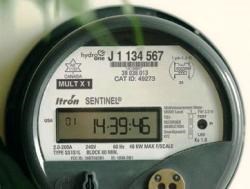Water meter readers in Orillia are about to become an extinct species.
On Monday night, council committee decided to invest almost $1.5-million to complete its move to a smart metering system.
According to the report from city staff, “advanced metering infrastructure (AMI), also known as smart metering, is used throughout the world for electric (hydro), gas and water. It is an integrated system of smart meters, communications networks and data management systems that enable two-way communication between utilities and customers.”
This most recent investment is the final step in a process that began more than a decade ago.
In 2007, the city started using Sensus potable water meters. In 2009, Orillia Power implemented AMI to “provide efficiencies in the reading of their electric meters and to provide customers with the opportunity to understand, conserve and manage their electricity costs.”
The city implemented the first phase of smart metering in 2015. It allows for automatic reading, either by walk-by or drive-by, concentrating on commercial and new residential properties. All of the city’s commercial water meters (approximately 1,200) now have two-way wireless communication devices installed and more than 650 have been installed within the residential section.
Council committee’s decision, if ratified Monday night, represents the final phase of the AMI project and will upgrade all customers connected to the water system with “SmartPoints”. Essentially, that represents a transition from walk-by/drive-by readings to a “cloud-based solution (that will) allow customers the opportunity to manage their usage through a customer portal.”
In the past, the city has contracted out water meter readers – something that will no longer be required, said Andrew Schell, the city’s director of environmental services and operations.
“Currently, contractors go out and go virtually door to door to collect readings though touch pads,” Schell explained to councillors. “What will happen now is treasury department staff will just ask for bulk downloads of area cycles that require reading and, ultimately, the treasury will receive reads.”
He said the system is more efficient and is better for citizens. “It … allows our customer base to access their accounts, manage conservation and actually view what usage is,” said Schell. “They can monitor through an Ap on their computer or mobile device.”
The technology could be a lifesaver of sorts, as well. Both city staff and citizens will be able to set up alerts that would be sent to their phones or computers to notify them, for example, if a leak is detected.
In addition to the $1,483,213 cost of the AMI, an estimated annual operating expense of $50,000 is expected, although Schell noted the city will see savings from discontinuing the hiring of contractors. At present, he’s not certain of “what added costs” will result until the system is fully operational and on-line.
